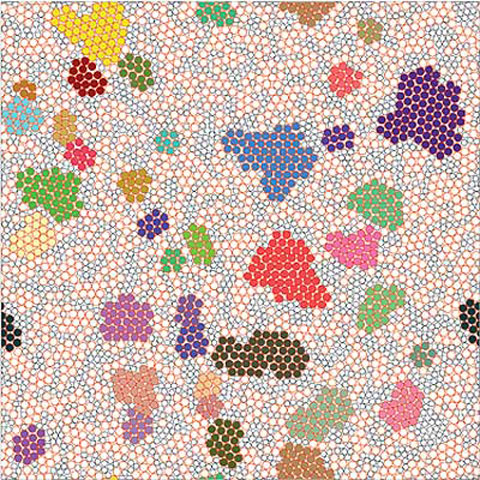Mysteries of the Glass Transition

A simulation of a glass transition, highlighting clusters of large particles.
Image Credit: Hentschel et al./APS
May 21, 2013
Despite its prevalence throughout history, glass has always presented a bit of a mystery to physicists. To this day, physicists still debate the nature of the glass transition — the point where certain amorphous solids become more brittle and, unsurprisingly, glass-like.
The atoms in amorphous solids don't align in a lattice pattern, such as in glass, plastics and even cotton candy. The transition of glass — a subset of amorphous solids — has presented longstanding, unresolved paradoxes that seem to fly in the face of thermodynamics.
These mysteries prompted physicist H.G.E. Hentschel and his collaborators to thoroughly investigate the glass transition in a study from 2008. With aid from simulations, they found that the thermodynamic properties vary significantly for different glasses undergoing the transition. Apparently, the specifics of the glass transition are far from universal.
The image above depicts one such glass transition with the clusters of large particles highlighted. Although the chosen colors don't have any special significance, they indicate that these scientists have an eye for not only theoretical but also aesthetic beauty.














